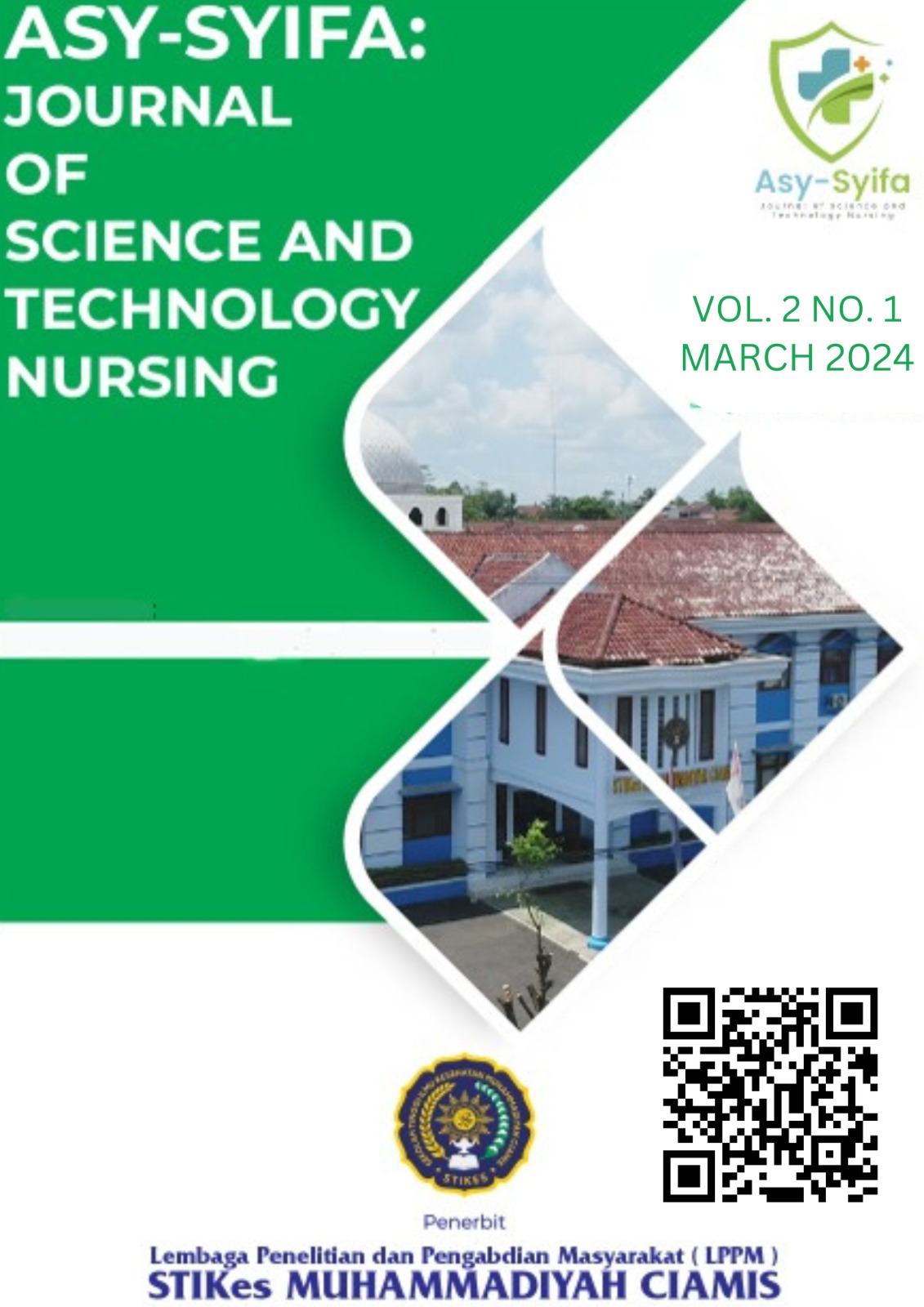Effectiveness Of Rom Exercise In Minimizing Delirium In Stroke Patients At Ciamis Hospital
Main Article Content
Abstract
Purpose: this study aims to determine the effectiveness of ROM in minimizing the occurrence of delirium in stroke patients at Ciamis Hospital. Methods: this study used a cohort study approach with the type of prospective cohort which was carried out for approximately 3 months. Results: the number of stroke patients with delirium obtained by the researchers was 14 people, the results of the Wilcoxon test analysis showed that there was no significant difference in the level of delirium in respondents before and after giving ROM to stroke patients with delirium with a p value of 0.180 > 0.05. Conclusions: the respondent's delirium level before doing ROM on average is hypoactive delirium, the respondent's delirium level after doing ROM is on average hypoactive delirium. and after ROM is done.
Downloads
Article Details

This work is licensed under a Creative Commons Attribution 4.0 International License.
References
Eide, IS, & Naik, M. (2021). Delirium – Diagnostics And Handling.
Hana, H., & Rahayu, S. (2023). The Socio-Economic Influence Of Post Stroke Suffering On Daily Life Activities (Axes) At The Medical Rehab Clinic Of Medirossa Hospital, Cikarang | Hanna | BK An-Nur Student Journal: Different, Meaningful, Noble. 8 Numbers 3, 10. Http://Dx.Doi.Org/10.31602/Jmbkan.V8i3.9022
Haykal, F., Prasojo, S., & Isytiaroh, I. (2021). Literature Review: The Effect of Bobath Method Exercise Therapy on Static Balance in Stroke Patients. Proceedings of the National Seminar on Health, 1, 1486–1493. https://doi.org/10.48144/prosiding.v1i.883
Heinrich, T. W., Kato, H., Emanuel, C., & Denson, S. (2019). Improving the Validity of Nurse-Based Delirium Screening: A Head-to-Head Comparison of Nursing Delirium-Screening Scale and Short Confusion Assessment Method. Psychosomatics, 60(2), 172–178. https://doi.org/10.1016/j.psym.2018.09.002
Inouye, S. K., Westendorp, R. G., & Saczynski, J. S. (2014). Delirium in elderly people. The Lancet, 383(9920), 911–922. https://doi.org/10.1016/S0140-6736(13)60688-1
Jessyca, F., & Sasmita, PK (2021). The Relationship Of Educational Level And Stroke-Related Experience With Stroke KnowledgE. Damianus Journal of Medicine, 20(1), 63–71. https://doi.org/10.25170/djm.v20i1.1737
Kanggeraldo, J., Sari, RP, & Zul, MI (2018). Expert System for Diagnosing Hemorrhagic and Ischemic Stroke Using the Dempster Shafer Method. RESTI Journal (Information Systems Engineering and Technology), 2(2), 498–505. https://doi.org/10.29207/resti.v2i2.268
Kuriakose, D., & Xiao, Z. (2020). IMP para qué es el ictus, tipos y causas. También para datos epidemiológicos y tratamientos. International Journal of Molecular Sciences, 21(20), 1–24.
Laily, S. R. (2017). Relationship between patient characteristics and hypertension with the incidence of ischemic stroke. Periodical journal of epidemiology, 5(1), 48–59.

